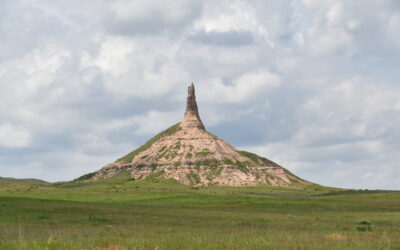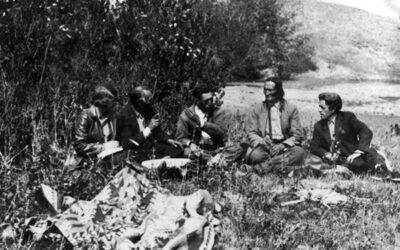Dr. John Dorwart of Friend, Nebraska wanted to ensure each of his nine children always had something to remember him by. So he made them furniture out of horns.

Horn furniture was very popular in the late 19th and early 20th centuries. Chairs were usually the most common, but horn tables, settees, hat racks, hall trees, footstools and other furniture were also made of horn. Although many created them for personal use, some home furnishing companies offered lines of horn furniture during the height of the craze.
This horn rocking chair with green velvet upholstery was made by Dr. John Dorwart, who created horn furniture as a hobby. Dorwart ordered the horns from Texas and spent hours polishing and carving them. He carved some horns to look like rattlesnakes.
Dorwart, a medical doctor and Civil War veteran, came to Nebraska with his wife Helen, and their children in 1871. They homesteaded about nine miles south of Friend, Nebraska. In 1880 they moved to Friend where he continued to practice medicine and ran a drug store. Dr. Dorwart’s hobbies were playing the violin and guitar, writing poetry, and making horn furniture. His goal was to make one piece of furniture for each of his nine children. History Nebraska has three of his pieces.
This object and hundreds of others were recently recataloged and photographed as part of a grant project for rehousing and recataloging furniture and large artifacts in History Nebraska’s collection. You can view this object and more in History Nebraska’s online database at: nebraskahistory.pastperfectonline.com
This project was made possible by the Institute of Museum and Library Services, IMLS number MA-30-16-0329-16




